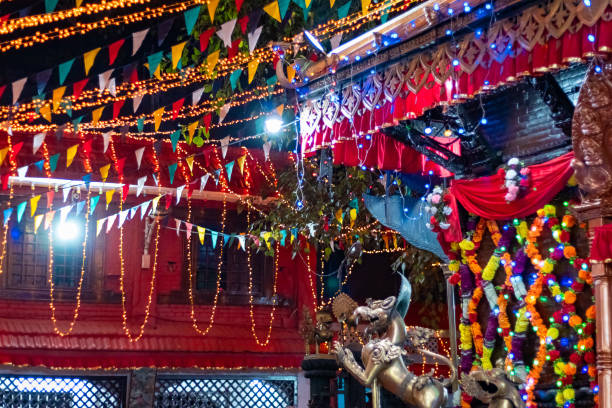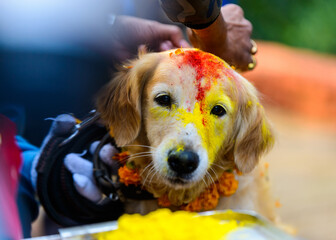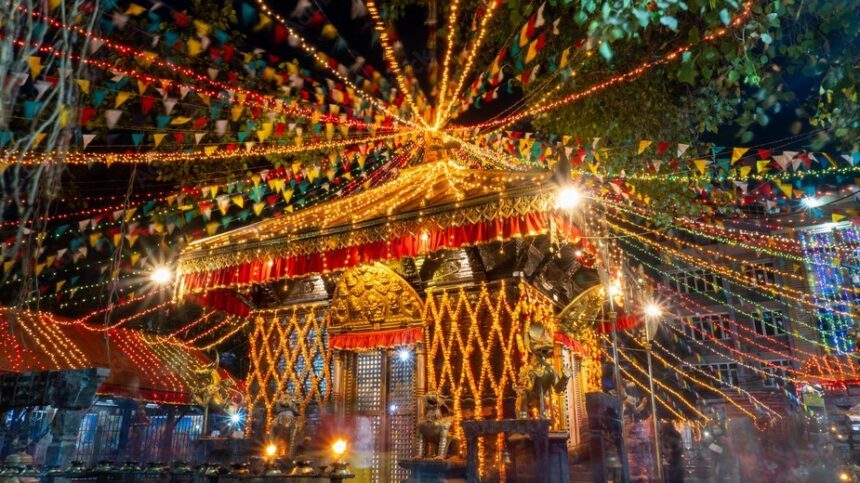Also known as Deepawali or Yamapanchak, the Tihar festival in Nepal is one of the prominent festivals. This five-day Hindu festival typically unfolds in the period between October and November, following the Dashain festival. Each day of the Tihar is characterized by unique customs and celebrations, providing Nepalese people with an opportunity to express their reverence and affection for a diverse array of animals and deities.

Let’s explore the five days of Tihar and their cultural importance:
Kag Tihar (Crow Puja):
The first day of Tihar is when people honor the crows. In Nepalese tradition, people believe that crows are the messengers of the afterlife. People decorate their rooftops with an assortment of food offerings to appease these avian messengers.
Kukur Tihar (Dog Puja):
On the second day of the Tihar festival in Nepal, dogs believed to guard the gates to the afterlife, take the spotlight. They are adorned with floral garlands, receive tika (a distinctive forehead mark), and savor delectable treats. This day therefore accentuates the loyalty and significance of dogs in people’s lives.

Gai Tihar and Laxmi Puja (Cow Puja and Goddess of Wealth):
The third day is a tribute to cows, revered as sacred animals in Hinduism. In the evening, people will start Laxmi Puja to honor the Goddess of Wealth, Laxmi. Thereafter, people embellish their homes with oil lamps and vibrant rangoli patterns which symbolize prosperity.
Gobardhan Puja (Ox Puja):
The fourth day is a time to pay homage to oxen, whose strength plays a pivotal role in Nepal’s agricultural endeavors. On this fourth day of the Tihar festival, special foods and decorations are therefore the attraction all over Nepal as tokens of gratitude for their invaluable contributions.
Bhai Tika (Brother-Sister Day):
The final day, known as Bhai Tika, celebrates the unique bond between brothers and sisters. Particularly on this day, sisters perform a special ceremony, applying tika on their brothers’ foreheads and presenting them with delicious food and gifts. In return, brothers further bestow blessings and gifts, symbolizing love, care, and the reinforcement of sibling relationships.
Tihar festival imbues Nepal with vibrant hues through its colorful decorations, oil lamps (diyas), and marigold garlands. The festival serves as a unifying force, bringing families together for sumptuous feasts and joyous celebrations. Beyond human relationships, Tihar also underscores the deep respect and affection that the Nepalese people hold for the animal kingdom and divine entities. Tihar is an indispensable pillar of Nepali culture and tradition, proudly displaying the nation’s rich cultural heritage.
Birendra Duwadi by profession a trekking and tourist guide and an enterpreur whose passion is trekking in the himalayas. Started Mission Himalaya Treks in 2015 with a new vision to introduce Nepal's Himlayas to the world. His vision is to explore and documentation new trekking routes . Birendra leads Mission Himalaya, a company that change the qualities of trekking in Nepal.








